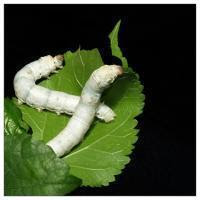Sunday, April 19, 2015
Uzbekistan
Dear Colleagues:
I am writing to you at the airport of Termez, a city on the
southern border of Uzbekistan with Afghanistan. This city is so far the highest
point of my trip. The city’s name is very likely after Demetrius, a general of
Alexander the Great, who, after the death of Alexander, ruled this area. There
are several important cultures met here: Greek, Bactrian, Buddhist, and later
Islam. A village 20 km north of the city is still called Macedon (!!!) after
more than two thousand years! I went to a ruin called Kampir Tepa (Tepa means
“hill”) which is believed to be one of the 80+ Alexandrias: Alexandria-Oxus
(Alexandria on the Oxus River, which is later called Amu Darya). It was a
citadel of Greco-Bactrians from 4th c. BCE to 2nd c. CE. It is believed that
Alexander himself and his troops took six days to cross the river and started
settlement here. His third wife Roxana is from nearby place in today’s
Tajikistan (less than 60 miles). I saw big ceramic storage jars. The fragments
were laid out on the ground by working archaeologists from more than two
thousand years ago! Really amazing!
There are also first and second century CE Kushan dynasty’s
palaces (ruins of course) and several Buddhist stupas and monasteries. Hellenistic
style Buddhist statues and column bases and capitals have been found in these
ruins. Kushans were nomads coming from northern China (Dunhuang, Gansu
province, China). Once they settled here, they started to adopt Greek
alphabets, coinage, and art style. They were the ones who first made Buddha in
human form. I will show you a statue found in a Buddhist monastery here. You
can see both Greek and Indian/Gandara styles on it. The artifacts in this
period and in this kind of cross-culture environment are the ones I am looking
for for my research project, so I am really excited.
In the central and western parts of the country, there were
two other cultural areas: Khorazm (centered in Old Urgenchi in Turkmenistan,
and Khiva in western Uzbekistan), where Iranian speaking people lived and
Zoroastrianism was popular; and Sogdiana centered in Samarkand and Bukhara (also
called Tranxiana: area between Oxus or Amu Darya and Syr Darya), where another
Iranian group Sogdians lived.
Once Islam has conquered Central Asia, they built mosques
and minarets. The oldest one left in Central Asia today is found here. It is
dated 1108. There are overwhelmingly mosques and madrasas (monasteries) in the
country. Many were originally built during Timurid time, but now most are
reconstructed and repaired only after the Soviet era.
Amir Timur, or Tamerlane, who claimed himself as the
descendant of Chengikhan and was a conqueror of Central and West Asia, Syria,
and Egypt, is recognized as national iconic hero after Uzbekistan’s independence
from USSR. His statues and monuments are found almost everywhere. He was born in
a place not far from Tashkent. I have been to both of his birthplace and
mausoleum.
Babur, one of Timur’s great-great grandsons became the
founder of the Mughal Dynasty in India. To trace Babur’s life was one of my
interests for the trip. He was born in Andijan, a city in the eastern part of
Fergana Basin in the northeast of the country.
To be continued. (October 2014)
Subscribe to:
Comments (Atom)































.jpg)











